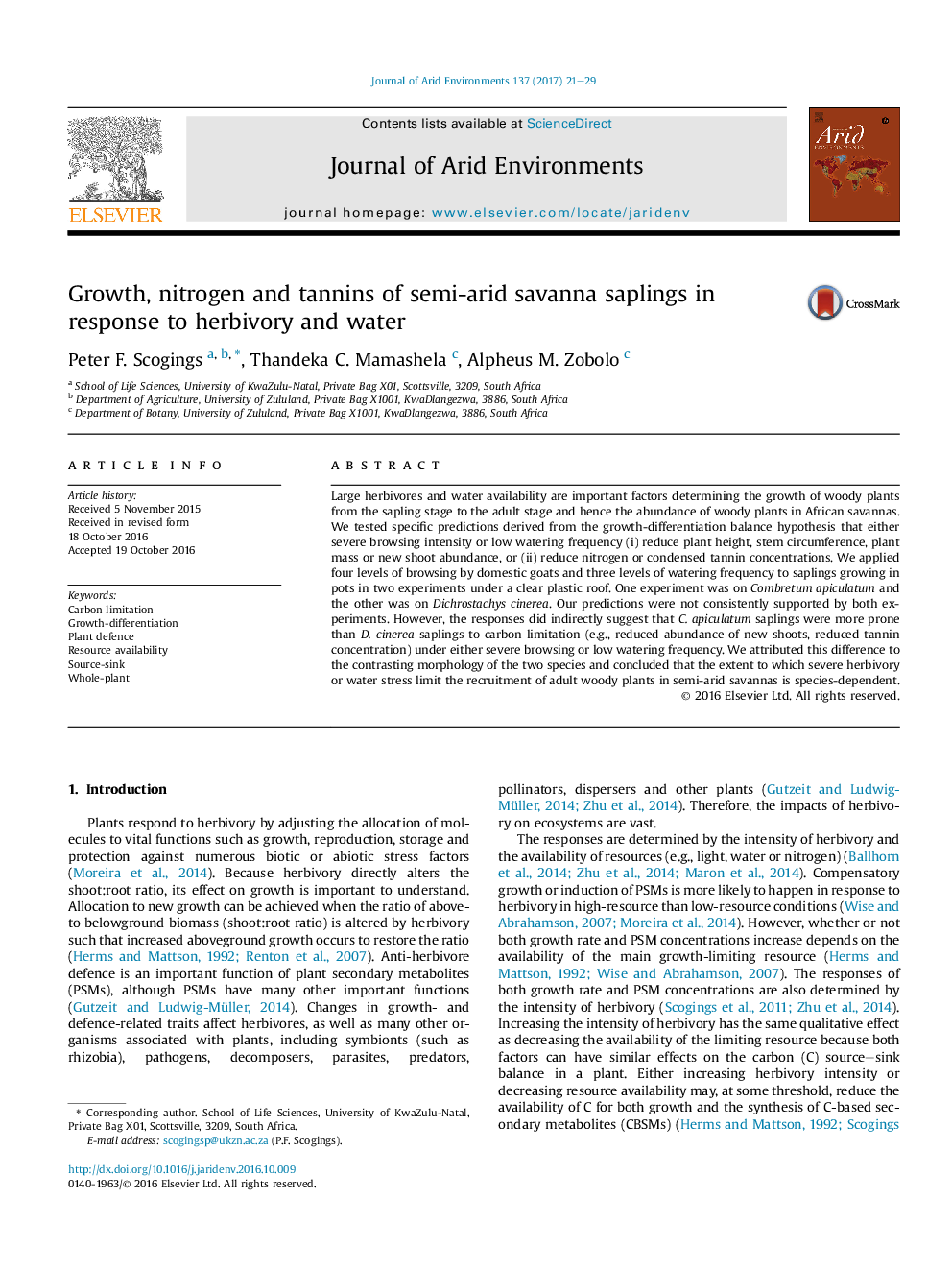| Article ID | Journal | Published Year | Pages | File Type |
|---|---|---|---|---|
| 5744413 | Journal of Arid Environments | 2017 | 9 Pages |
Abstract
Large herbivores and water availability are important factors determining the growth of woody plants from the sapling stage to the adult stage and hence the abundance of woody plants in African savannas. We tested specific predictions derived from the growth-differentiation balance hypothesis that either severe browsing intensity or low watering frequency (i) reduce plant height, stem circumference, plant mass or new shoot abundance, or (ii) reduce nitrogen or condensed tannin concentrations. We applied four levels of browsing by domestic goats and three levels of watering frequency to saplings growing in pots in two experiments under a clear plastic roof. One experiment was on Combretum apiculatum and the other was on Dichrostachys cinerea. Our predictions were not consistently supported by both experiments. However, the responses did indirectly suggest that C. apiculatum saplings were more prone than D. cinerea saplings to carbon limitation (e.g., reduced abundance of new shoots, reduced tannin concentration) under either severe browsing or low watering frequency. We attributed this difference to the contrasting morphology of the two species and concluded that the extent to which severe herbivory or water stress limit the recruitment of adult woody plants in semi-arid savannas is species-dependent.
Related Topics
Physical Sciences and Engineering
Earth and Planetary Sciences
Earth-Surface Processes
Authors
Peter F. Scogings, Thandeka C. Mamashela, Alpheus M. Zobolo,
